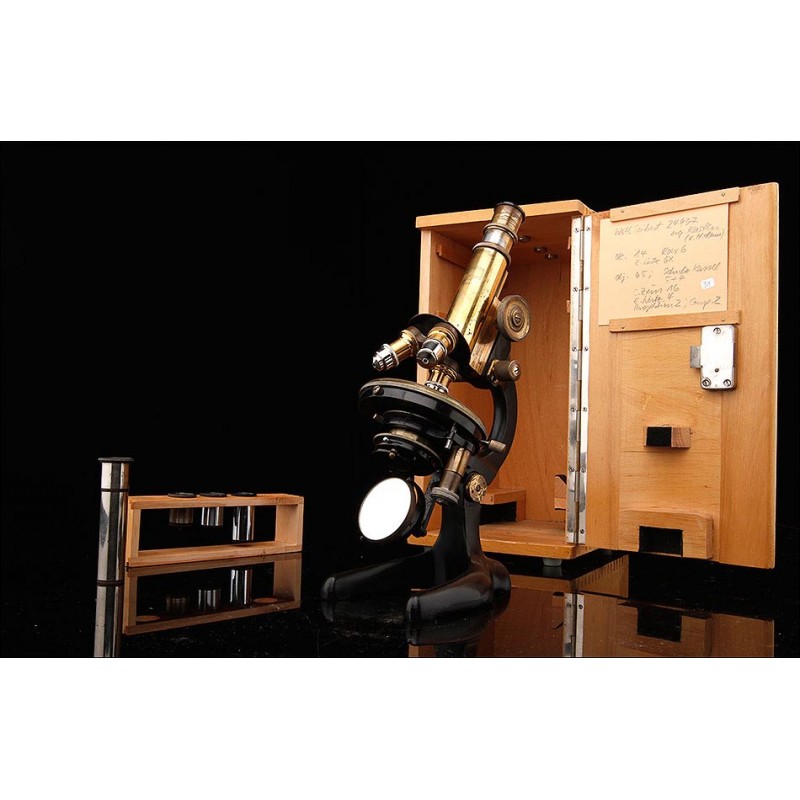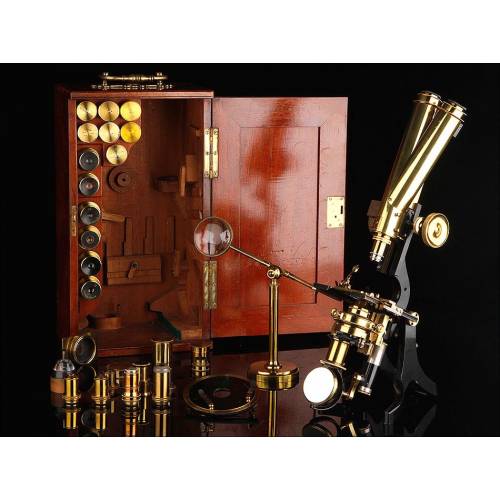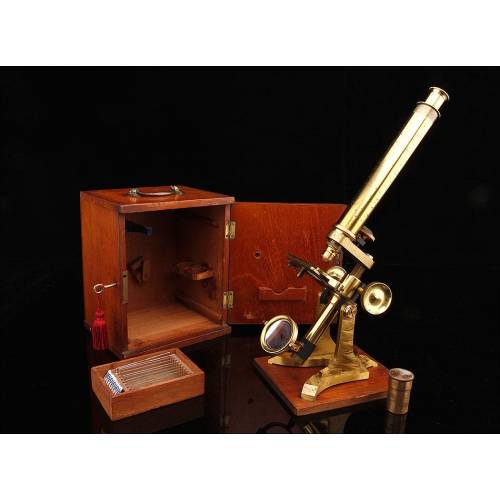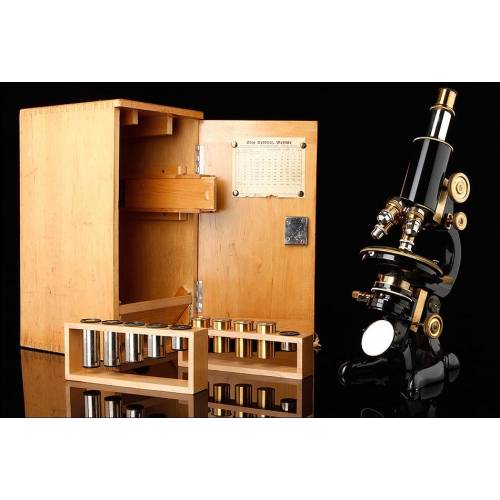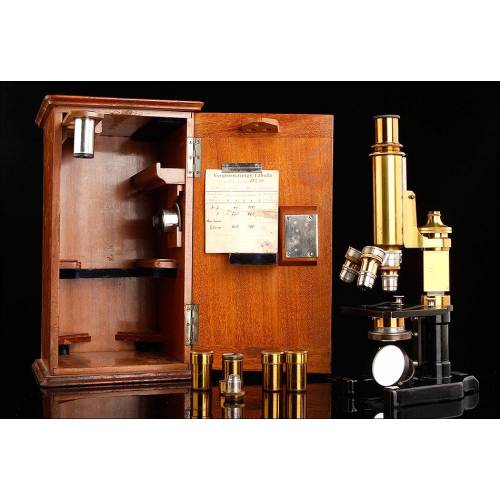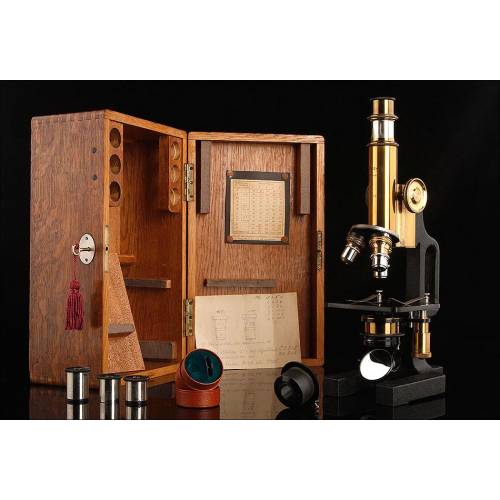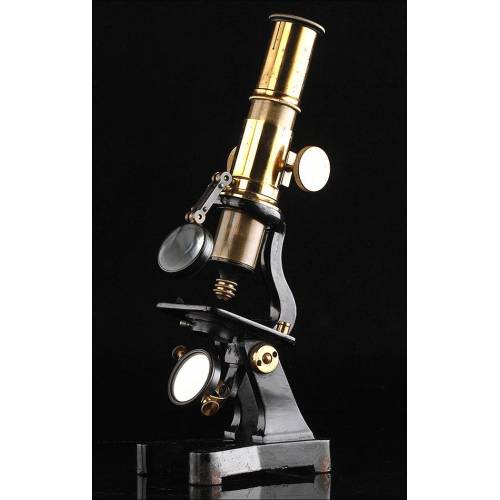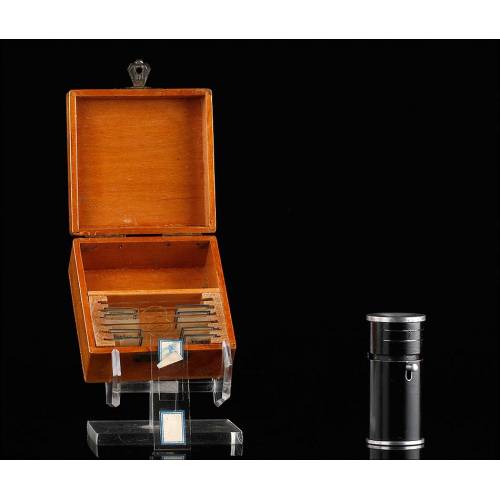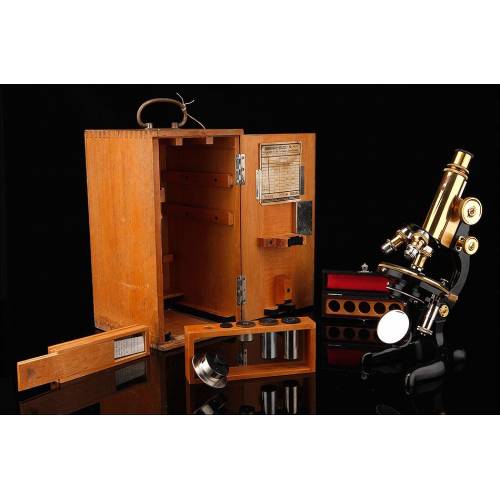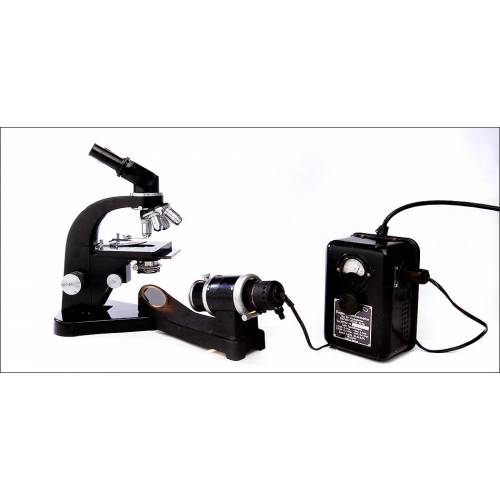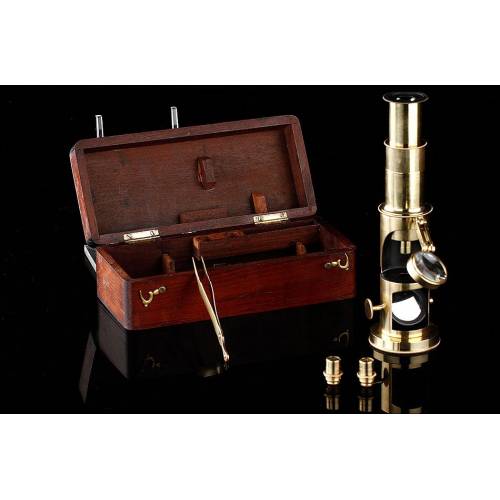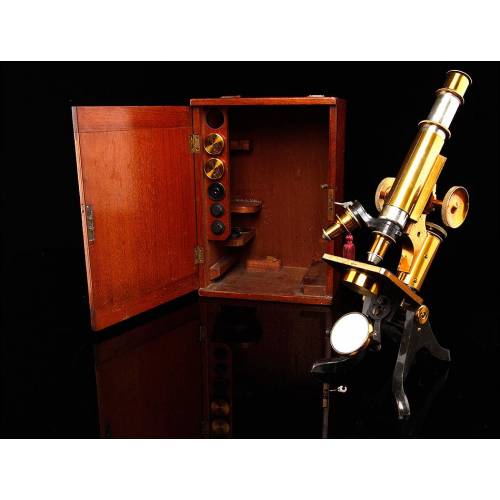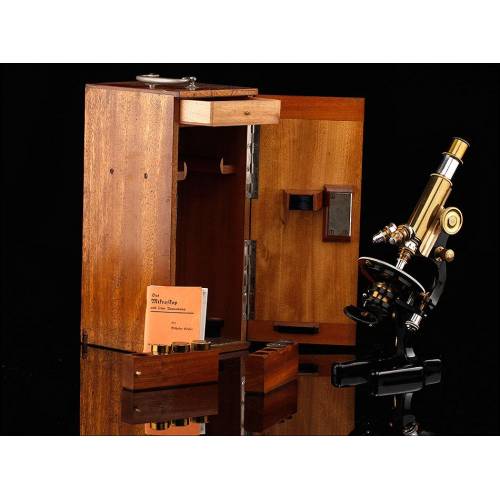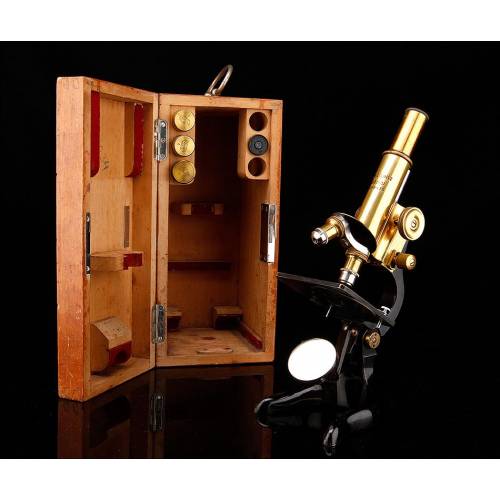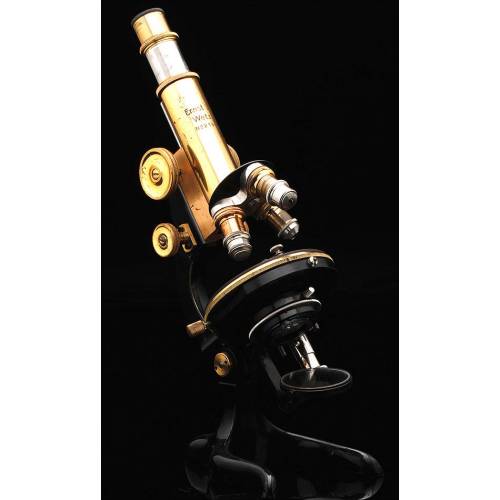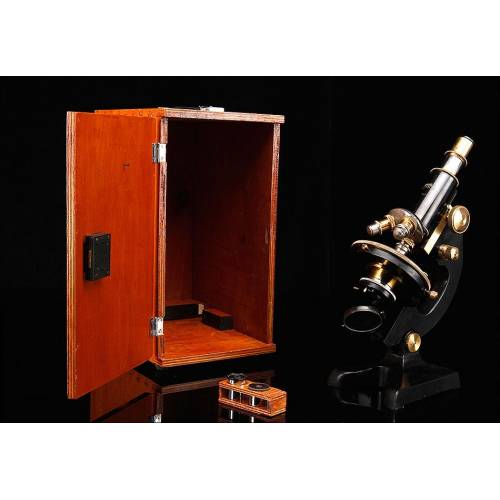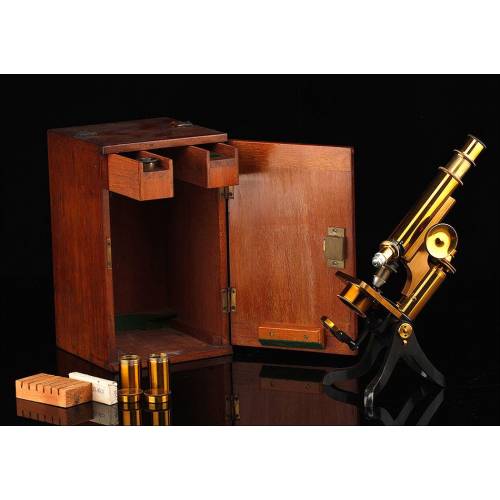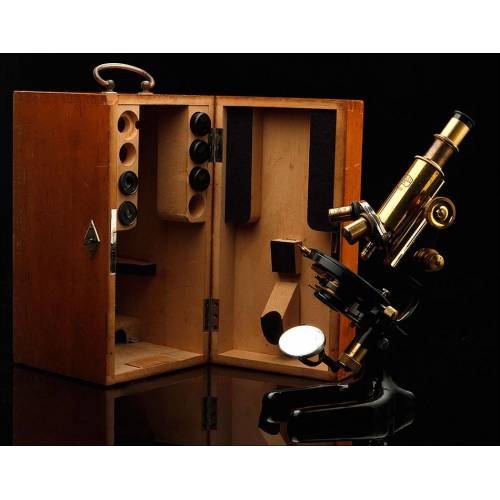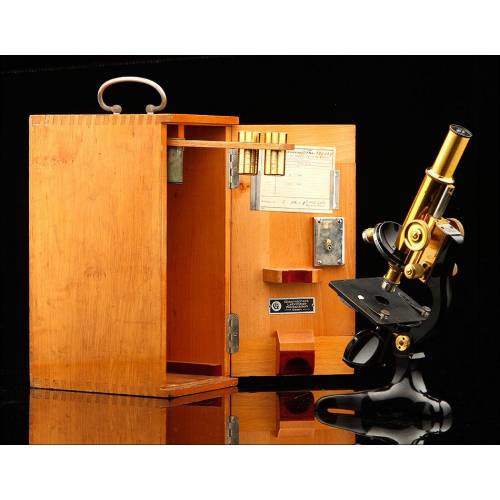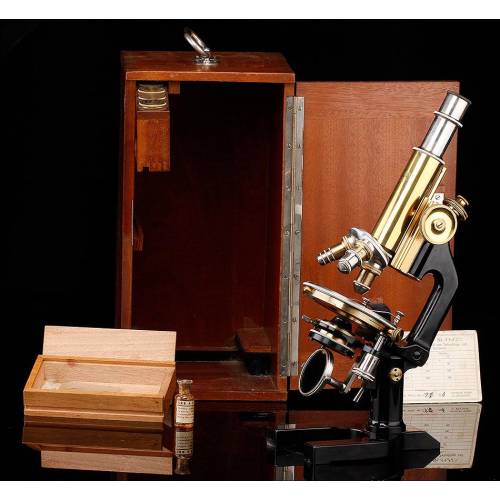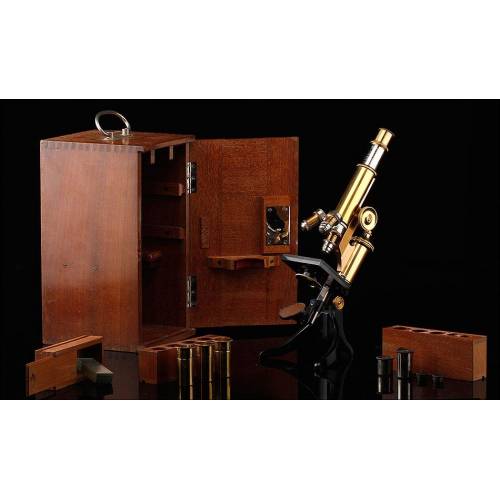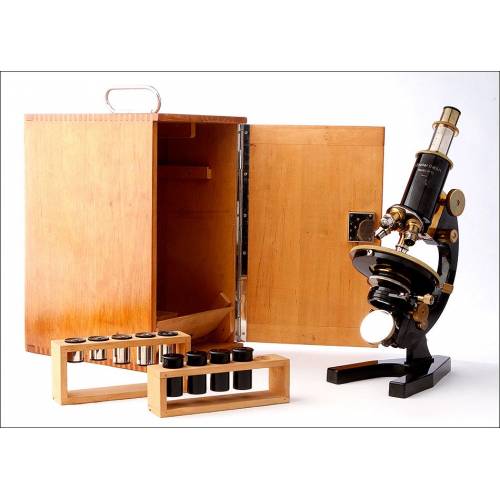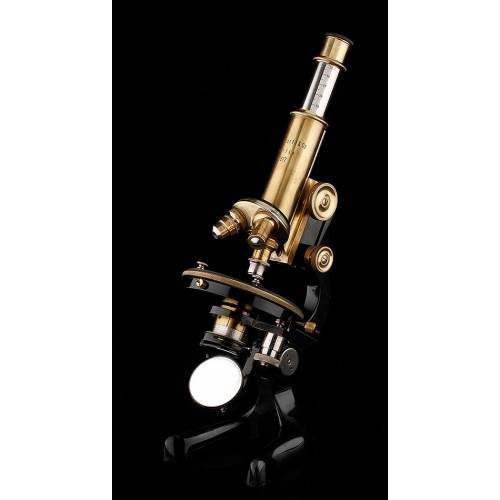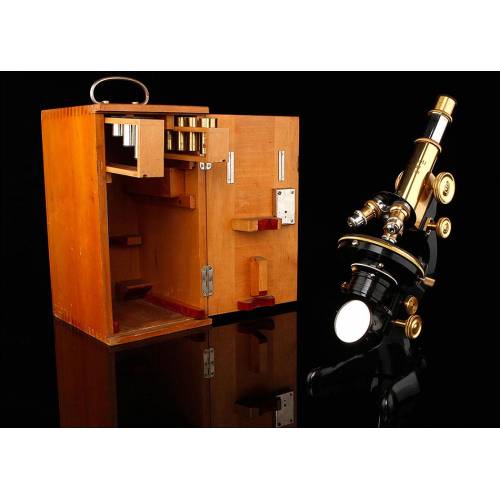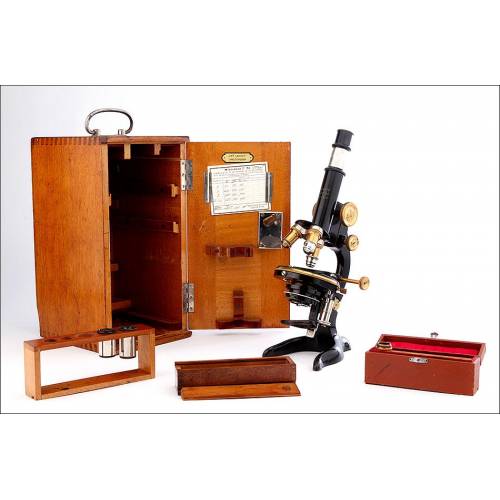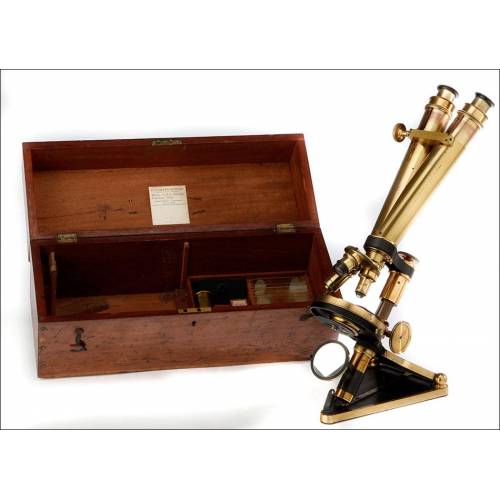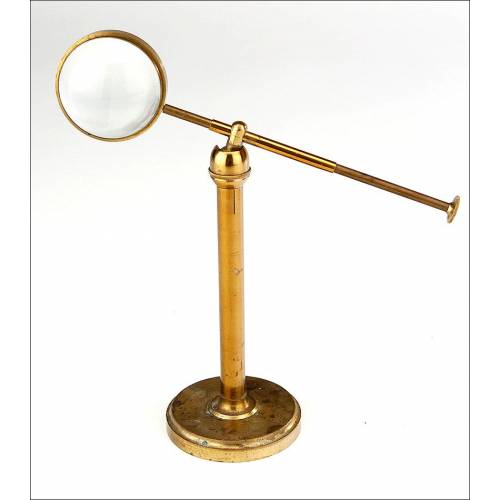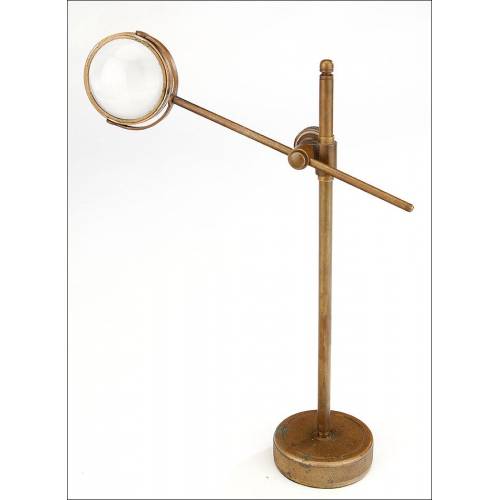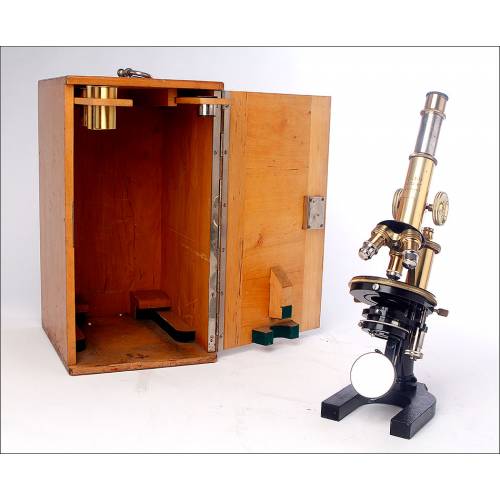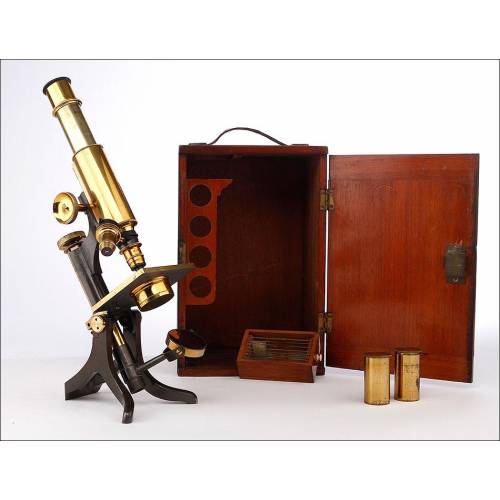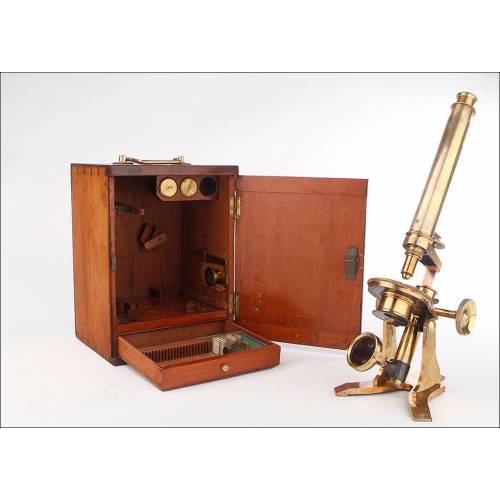A-688
German Seibert Microscope, 1920s.
German Seibert Wetzlar microscope, made in the 1920's. With original case and accessories.
Sold!
Striking German microscope from the 1920s made by Seibert Wetlzar and in its original wooden case. This is a high-quality microscope that has survived to our days in excellent condition and working order. The instrument, with a sober and nice design, comes with three extra eyepieces organized in a wooden stand. The box where the microscope can be stored is also made of solid wood and is responsible for it surviving to our days well preserved.The company Seibert Wetlzar started in Berlin, 1867 when the Seibert brothers, Wilhelm and Heinrich, began manufacturing microscopes. They later moved to Wetzlar, where famous optic material manufacturer Ernst Leitz had his own Optical Institute. Famous doctor Robert Koch, discoverer of the tuberculosis bacillus, used a Seibert microscope and an adapted camera to take photos of bacteria. Nevertheless that was a more primitive model that the one we can see in these images, whose evolved design provides currently an excellent operation.The microscope has the classic black-enameled iron foot and brass mobile component parts, protected by the original transparent lacquer. It mounts a three-lens revolving nosepiece and the turret bears the engraved manufacturers name and logo, W & H SEIBERT WETLZAR, and also the instruments serial number: 248937. The box that comes with the microscope is made of solid beech wood, robust and light-colored, and is composed of several planks disposed in different positions so their veneers make up an attractive combination. The case has nice dovetail joints and keeps the original lock and key in working order.No good collector will miss the opportunity to get such a fine, functional and original microscope like this great Seiber Wetlzar model.Measurements: Width: 6.6 in/17 cm. Height: 12.5 in/32 cm.

